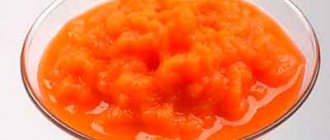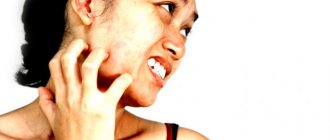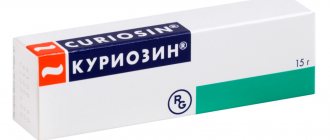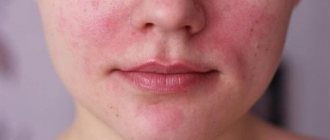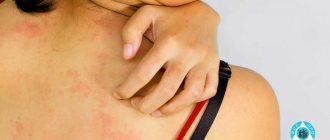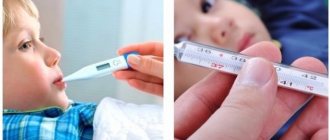A change in skin color on the face immediately catches the eye and serves as one of the markers of a person’s health status for doctors. One of the most serious signs of disorders in the body is a yellow face (especially in combination with yellow whites of the eyes).
Of course, maybe the fact is that a person eats only oranges, carrots and turmeric or abuses medications, but this does not happen often.
So it’s better to check your health, because yellowness of the skin and eye sclera is not only not aesthetically pleasing, but can also be a symptom of diseases of the liver, pancreas or thyroid gland, and even oncology.
Why can a person’s face and eyes suddenly turn yellow? What pathologies may be hidden under changes in complexion? How to diagnose the problem? Read our article.
What causes yellowness of the epidermis
Many people dream of having healthy, smooth skin. It is generally accepted that a white face with a slight blush is a sign of good health. The color of a person’s skin can change, which is due to several factors: race, health, lifestyle, professional habits, heredity.
Most often, the question of why the complexion has become unnatural arises when yellowness is clearly expressed. It cannot be hidden under cosmetics, makeup, or eliminated with creams. Why does the epidermis acquire a jaundiced tint, what reasons lead to this pathology? Let's try to understand the issue.
Unnatural skin color on the face and poor condition of the epidermis are harbingers of serious pathologies in the human body. The most common, widespread problem of yellowness of the epidermis is “excess” bilirubin in the bloodstream. It is a breakdown product of iron-containing protein - hemoglobin, which is responsible for transporting oxygen and carbon dioxide in the body.
Bilirubin is formed when dead red blood cells (red blood cells) are broken down in the liver. An increase in the concentration of this pigment is noted in chronic diseases, pathologies of the liver, bile ducts, in particular, when their ducts are blocked, or stones in the gall bladder.
If there is an excessive concentration of bilirubin in the bloodstream, yellowing of the sclera of the eyes, palms, and the inner surface of the tongue is first diagnosed.
Yellow skin on the face may be a sign of disruptions in the functioning of the cardiovascular system and lipid metabolism disorders. It happens that a change in the shade of the epidermis indicates a sharp change in diet, disruption of metabolic processes, and excess cholesterol in the blood.
A yellow complexion can be caused by an excess of carotene in the body due to excessive consumption of vegetable salads, juices, fresh juices with a high content of carrots, tangerines, oranges, and pumpkins. Yellowness is caused by a lack of enzymes that break down beta-carotene. Stagnation of bile can be provoked by the consumption of large quantities of spicy spices, such as turmeric, cumin, the predominance of fatty, spicy foods, and marinades in the diet.
A yellow complexion indicates an unbalanced, incorrectly selected diet. This shade of the epidermis appears during prolonged fasting, abuse of alcoholic beverages, and narcotic substances.
Additionally, the problem may be caused by the following conditions:
- strong physical activity;
- stress, long-term depression, emotional overstrain;
- regular lack of sleep, insomnia;
- disorders of the digestive tract;
- hormonal imbalance causing frequent mood swings;
- excessive exposure to the scorching sun.
Another common reason that leads to changes in complexion, yellowness of the mucous membranes and skin is a disruption in the functioning of the endocrine system, in particular the thyroid gland. Yellow complexion due to liver disease
As already noted, yellow complexion is caused by liver pathologies: Gilbert's syndrome, hepatitis, cirrhosis, helminthic infestations caused by endoparasites. Hepatitis and some other pathologies occur in acute or chronic form. The reasons for their development can be very different. So, hepatitis can be viral or infectious. It happens that the disease develops after exposure to chemicals, toxic substances, long-term use of antibacterial and other medications.
Based on the nature of the disturbance in the processes of bilirubin secretion, three types of jaundice are distinguished:
- hemolytic;
- hepatic;
- cholestatic.
In the first case, accelerated breakdown of bilirubin is noted. At the same time, the liver cannot cope with the load and does not have time to convert direct bilirubin into indirect bilirubin.
Hepatic jaundice develops against the background of infectious, viral, and fungal diseases. With this form, a high concentration of direct bilirubin in the bloodstream is noted.
The cholestatic type occurs due to blockage of the bile ducts, due to stagnation of bile, with neoplasms and stones in the gallbladder.
A yellow complexion can be caused by endoparasites - helminths (parasitic worms), which during their life processes release toxic substances that disrupt the integrity of tissues and cause severe intoxication of the body.
Liver diseases are accompanied not only by a yellow-green tint of the epidermis, but also by disturbances in digestive processes, lack of appetite, vomiting, diarrhea, attacks of nausea, light-colored stools, deterioration of the general physiological condition, and pain in the lower part of the peritoneum. Yellowness of the epidermis is often accompanied by darkening of the color of urine, especially in the morning.
How to eliminate the symptom?
Effective complex therapy should be prescribed exclusively by specialists based on research and analysis of the underlying disease. Categorically exclude the possibility of self-medication, do not purchase over-the-counter drugs to support the liver. Perhaps your disorder lies in another aspect, and independent selection of medications can only aggravate its course. You should not experiment with alternative and folk remedies. The liver and bile ducts are a serious system that can easily be damaged, but it will be extremely difficult to restore it.
Treatment is prescribed from the first visit to the doctor. An adequate differential diagnosis is carried out to determine the exact cause of the unpleasant symptom. Then the patient is prescribed synthetic medications and certain phytotherapeutic preparations that help maintain the liver normal. If necessary, urgent intervention is performed. To maintain normal health, the patient is prescribed a number of physiotherapeutic procedures.
Physiological yellowing of the skin in infants tends to resolve spontaneously within a few weeks after birth. However, the pediatrician must closely monitor the condition of the newborn to prevent the development of liver pathology.
yzdorov.ru
Yellowness on human skin can appear due to various diseases that are somehow related to the functionality of internal organs. The yellow tint to the skin is due to bilirubin.
Bilirubin is a certain pigment that is present in the blood, formed as a result of the breakdown of hemoglobin proteins present in red blood cells and carrying out the movement of oxygen and carbon dioxide. Bilirubin is removed from the human body through stool. If for some specific reason it accumulates more than expected, then yellow spots become the result. If the skin on the body is yellow, this is most likely due to the high content of carotene in the blood. Often, yellow skin surrounding the mouth or eyes is observed in those who maintain an orange diet for a long time or use some kind of medications. If the body has turned yellow due to a violation of the removal of bilirubin from the body, in this case 3 types of jaundice are determined.
The diagnosis of hemolytic jaundice is made when hemoglobin breaks down too quickly. In this case, a huge amount of bilirubin is formed, the liver cannot process it effectively. Hepatic jaundice is associated with liver damage due to viral hepatitis or cirrhosis of the liver, the effects of alcohol, etc. Cholestatic jaundice develops due to disturbances in the movement of bile, since the bile ducts in the human body are tightly clogged. The appearance of yellowness on human skin can be directly related to some very serious diseases. Very often, symptoms of yellowish skin occur with various liver diseases. This symptom is mainly characteristic of acute and chronic hepatitis, liver cirrhosis and Gilbert's syndrome. Also, yellowness can indicate liver damage by parasites and the appearance of a cyst. In case of liver disease, in addition to yellowing of the skin, other alarming symptoms are noted: light-colored stools, dark urine, chills and cutting pain in the abdomen. Appetite and, in some cases, weight are lost.
If a person’s body turns yellow, this may be due to eating a huge amount of carrots and some dishes made from them, as well as adding cumin and vinegar to food, the effect of which provokes the accumulation of bile vapor in the blood. When there is a pale yellow tint to the skin and yellow spots are present on the irises of the eyes and eyelids, it is possible that a lipid metabolism disorder occurs in the body, which causes an increase in cholesterol levels. Before practicing any methods of treating this condition, it is necessary to determine exactly what cause the yellowness of the skin is associated with. If there is pronounced yellowness of the skin, you should consult a doctor. In this case, an infectious disease specialist, hematologist, endocrinologist and gastroenterologist can help.
Treatment of a person who has yellowness of the hands, face and other areas of the body depends on the diagnosis established by a specialist. Sometimes, in the absence of serious diseases, yellowness of the skin may well disappear on its own after some period of time, without drug treatment. Usually, for diseases of the liver and biliary tract, complex treatment is prescribed. Starting from the first days of therapy, the yellowing of the skin decreases. The treatment package includes medications, physical therapy, and sometimes surgery. In newborn babies, the yellowness on the body usually goes away after a few weeks of life. However, doctors must monitor the condition and health of the child so as not to accidentally miss the development of liver pathologies. Sometimes newborns undergo phototherapy: for a certain period of time, the child is placed under the glow of a fluorescent lamp. Under the influence of the lamp, bilirubin is destroyed and removed from the body. In order to prevent yellowing of the skin, you need to be careful about your health. If the body suddenly turns yellow, only a doctor can diagnose what it is and how it could end. Strict measures must be taken to avoid contracting viral hepatitis.
There are cases when yellowness of the skin can indicate the progression of cancer in the human body. The yellowness of the skin in cancer is quite noticeable on the face, and the bloodless color of the skin is clearly noted.
www.medcent.ru
It is important to know!
Hepatitis can be treated with a simple folk remedy, just in the morning on an empty stomach... Read more »
Source: gepasoft.ru
The most interesting:
How to improve your complexion
If the natural color of the epidermis changes, the appearance of yellowness of the skin, spots, or deterioration of the general physiological condition, you should contact a gastroenterologist, infectious disease specialist, hematologist, and undergo a series of laboratory examinations and tests. During the diagnostic process, infectious, viral, parasitic diseases, disturbances in the functioning of the endocrine, excretory, and cardiovascular systems can be identified.
To get rid of the unnatural color of the epidermis, you will have to understand why it arose and eliminate the cause. If no serious health problems are detected, it is worth radically reconsidering your lifestyle, giving up bad habits, and starting to monitor your diet. It is important to pay attention to physical activity, sports, be in the fresh air more often, and follow a daily routine.
The diet should be dominated by fresh vegetables, herbs, berries, fruits, whole grains, dairy products, vitamin and mineral complexes. Excessive pallor and yellow skin color will disappear if you systematically consume figs, dates, veal, foods rich in fiber, garlic, apples, and tomatoes. In case of severe intoxication, absorbents will help cleanse the body of harmful substances.
Cosmetic procedures, professional medical cosmetics, and special care can improve the color of the skin on the face and remove yellowness. Several times a week it is worth making nourishing masks based on fermented milk products, natural ingredients, and medicinal plants. Alternative medicine will help normalize the condition of the epidermis.
There are a number of reasons why your skin may turn yellow. In fact, yellow skin is not always a bad thing. Some fruits and vegetables can add a little yellow tint, and excess consumption of carotenoids can give your skin an orange tint. This excess of color and shades is known as hypercarotemia or carotemia. It must be remembered that a baby who has turned yellow from consuming too much beta-carotene may not have any disease at all. But, if the yellow color is caused by bilirubin, then it is jaundice. It can be a sign of serious health problems, especially those related directly to the liver.
Skin care
Yellow complexion (we discussed the reasons and photos in this article) can be overcome. You have already learned some methods earlier. Now we'll talk a little about caring for your skin.
A healthy complexion can be achieved by cleansing it daily. This is especially true for women who wear tons of makeup. Wash your face, use tonics and cleansing foams. Scrubs will help you do deep cleaning. Be sure to read the instructions before use. Typically, a deep cleansing scrub is used once a week.
Why does the skin turn yellow?
Jaundice is a medical term that describes the yellowing of the skin and visible mucous membranes. The phenomenon itself is not considered a disease, but a symptom of several possible more serious diseases. Jaundice begins when there is an increased level of bilirubin in the system - this is a yellow pigment that is formed after the breakdown of dead red blood cells in the liver. As a rule, the substance leaves the body with old red blood cells. Jaundice may indicate a serious problem with the function of the liver, gallbladder, or pancreas. It begins with a change in the color of urine and stool. The urine becomes dark and the stool becomes light. Then the mucous membranes are stained, then the skin.
Jaundice occurs due to hepatitis, hemolysis of red blood cells, and obstruction of the outflow of bile. If you eat a lot of foods containing beta-carotene, your skin may turn yellow.
Causes and symptoms of yellowing skin
If you notice that your skin is turning yellow, pay attention to other symptoms. Below are the possible causes (diseases) that cause the skin to turn yellow. In any of these cases, it is worth seeking medical help and conducting examinations.
Jaundice in adulthood often indicates:
- alcohol abuse;
- liver infections;
- liver cancer;
- cirrhosis (liver fibrosis, often due to alcohol);
- gallstones (cholesterol stones from hardened fatty material or pigment stones from bilirubin);
- hepatitis (disease and swelling of the liver, which reduces its ability to function);
- pancreatic cancer;
- parasites in the liver;
- hemolytic anemia (rupture or destruction of red blood cells, which causes a reduction in the number of red cells in the circulation, leading to severe fatigue and weakness);
- an adverse reaction or overdose of a drug such as acetaminophen (Tylenol).
Yellow skin is also common in babies who are born prematurely. Excess bilirubin can occur in newborns because their liver is not yet fully developed. Bilirubin is a yellow pigment formed by the breakdown of old cells. Jaundice begins when the liver does not metabolize bilirubin as well as it needs to. The organ may be damaged and in this case is not able to carry out the natural process. There are cases when bilirubin is not able to enter the digestive system, from which it is freely excreted along with the stool. In other cases, there is too much bilirubin trying to leave the liver at once, or too many red cells being destroyed at once.
Chronic hepatitis C
Hepatitis C is a consequence of liver damage from the hepatitis C virus (HCV), which is transmitted into the human blood. It is spread through contact with contaminated blood, such as contaminated needles, toothbrushes and razors, unprotected sex with an infected person, and from mother to child during childbirth. You should schedule a visit with your doctor to discuss possible treatment options. Symptoms: weakness; nausea; muscle pain; loss of appetite; joint pain. Symptoms that never occur with chronic hepatitis C: pain in the right hypochondrium; pain in the left hypochondrium; pain around the navel.
Infectious mononucleosis
Mononucleosis is a clinical syndrome characterized by fever, sore throat and swollen lymph nodes. The diagnosis is confirmed by searching for antibodies against viruses that cause mononucleosis. In infectious mononucleosis, the liver and spleen are affected, and moderate jaundice is possible.
Sickle cell anemia
Severe pain is a hallmark of sickle cell disease. They are caused by a blocked blood vessel. Patients may develop jaundice.
Gallstones
Gallstones are hard deposits that form in the gallbladder. Symptoms: nausea, loss of appetite, pain in the right hypochondrium, jaundice.
Hemostatic spherocytosis
Hereditary spherocytosis is a condition in which red blood cells change. People with this condition usually have a lack of red blood cells (anemia), yellowing of the eyes and skin (jaundice), and an enlarged spleen (splenomegaly). Symptoms: fatigue; pain (stomach pain); fever; general abdominal pain; yellow skin.
Inflammation of the gallbladder (cholecystitis)
Cholecystitis is inflammation of the gallbladder. The organ contains bile (digestive juice). Gallstones can form when it becomes thick (the stones block the gallbladder and cause inflammation). Ignoring medical attention often results in the bladder rupturing and causing a fatal infection in the abdomen. Symptoms: pain (abdominal pain); nausea; loss of appetite; diarrhea; constipation.
Liver neoplasm
It is a serious liver disease. The organ is necessary for metabolic processes and is responsible for filtering and purifying the blood. If you notice yellowing of your skin, you should not put off going to the doctor. Possible symptoms: fatigue; loss of appetite; nausea or vomiting; abdominal pain; unintentional weight loss.
When should you see a doctor?
Many people do not notice that the skin has begun to turn yellow and seek help only in cases where the yellowness becomes obvious. In order to know whether you need to go to the hospital, you need to answer a few simple questions. The doctor asks exactly the same questions when determining the diagnosis. Questions a specialist may ask about yellow skin are:
- Have you experienced nausea?
- Have you had a fever today or within the last week?
- How's your appetite?
- Have you felt more tired than usual, sick, or unable to do anything despite getting enough sleep?
If you answered “yes” to one or more of these questions, get your body checked.
“Bad” and “good” yellowness of the skin
Foods rich in carotenoids can give your skin a healthy glow.
This yellow color is usually a lighter color - a subdued bright yellow color and glow. This comes from eating fruits and vegetables. But too much of these vitamins and eating carotene-rich foods can lead to a yellowish tint to the skin. The increase in yellowness is often caused by the carotenoids found in fruits and vegetables that give them their color: beta-carotene and lycopene. These beneficial compounds not only give skin tone, but are also powerful antioxidants that help stop cell damage. Since these pigments are fat-soluble, they accumulate in the skin.
It also happens that yellow is a bad color. Vivid skin and yellow mucous membranes are a sign of serious illness. Jaundice occurs when there is a problem with the normal dynamics between blood cells and the liver. Blood cell membranes become more fragile with age and must eventually be removed from the body. They are filtered out in a system that includes organs such as the liver and spleen, which convert these old cells into bilirubin, and can then leave the body through stool and urine.
Bilirubin is what gives bruises their yellowish tint as they heal. The liver usually contains a lot of blood cells, but if there is an abnormal number of old red blood cells entering the liver and the liver is not functioning properly, or bilirubin cannot be cleared from the digestive tract, this can lead to an excess of them in the body and cause jaundice.
This condition must be noticed in time. Jaundice usually goes away when the underlying cause is treated. The duration of the procedures depends on the general condition of the patient. Seek immediate medical attention as this may be a sign of a serious illness. Mild jaundice in newborns usually goes away on its own without treatment and does not cause long-term liver problems.
- Bondar Z. A. Jaundice. – M., 1965
More fresh and relevant information about health on our Telegram channel. Subscribe: https://t.me/foodandhealthru
Specialty: infectious disease specialist, gastroenterologist, pulmonologist.
Total experience: 35 years.
Education: 1975-1982, 1st MMI, San-Gig, highest qualification, infectious disease doctor.
Scientific degree: doctor of the highest category, candidate of medical sciences.
Training:
- Infectious diseases.
- Parasitic diseases.
- Emergency conditions.
- HIV.
Yellow skin color is a common phenomenon that can result from many factors. Such pigmentation in an adult does not always have negative consequences, as it can appear due to the food consumed. However, yellowed skin can indicate diseases of the liver, blood and gall bladder, which entails serious consequences for the body.
For this reason, it is necessary to carefully monitor your health and promptly seek help from a doctor.
Liver problems
One of the most common causes of a yellow complexion is liver dysfunction. Such diseases include cirrhosis, hepatitis or helminths.
For this symptom, the doctor prescribes a blood test, which usually detects bilirubin. Based on the results obtained, the doctor finds the cause of the yellow complexion and prescribes the correct treatment. Please note that liver problems can be avoided if you eat right, lead a healthy lifestyle and do not abuse alcohol.
Causes of yellow skin
Yellow skin color in an adult may indicate the presence of both serious pathologies and digestive problems. Bilirubin, which is a breakdown product of hemoglobin, is responsible for the yellow color of the epidermis. The latter, in turn, transports oxygen in the body.
The pigment bilirubin is formed in the liver as a result of the decomposition of red blood cells. In some cases, an increase in pigment content leads to blockage of blood vessels and bile ducts, liver pathologies, and the formation of gallstones. In addition to yellowing of the skin, increased bilirubin gives a yellow tint to the sclera of the eyes and the surface of the tongue.
Yellow facial skin is observed when the cardiovascular system and lipid metabolism are disrupted. Another cause of pathology is a sudden change in diet, problems with metabolism and high cholesterol in the blood. Yellowing of the skin can be a reaction of the body to vegetable salads, juices or fresh juices with a high content of carrots, pumpkin, orange or tangerine.
Excessive intake of various spices
Excessive intake of various spices, fatty and spicy foods can provoke stagnation of bile, which subsequently affects the condition of the skin. Unhealthy skin tone appears as a result of an unbalanced diet, after prolonged fasting, alcohol and drug abuse.
In addition to the above reasons, pathology can be caused by:
- serious physical activity;
- stressful situations, depression and emotional shock;
- prolonged insomnia;
- pathologies of the digestive tract;
- hormonal imbalances;
- the body's reaction to exposure to the sun.
Among the serious disorders are malfunctions of the endocrine system, as a result of which the thyroid gland suffers. The environmental situation in the place where a person lives also affects the appearance and condition of the skin. The presence of a large number of enterprises in the city and work in such places over time can lead to disorders of various organs of the human body.
Mood
Another way to maintain health and a beautiful complexion is to smile. You need to learn not to let your emotions take over. Even if it’s hard for you, smile, soon it will become your good habit.
Why do stress and nervousness affect your appearance so much? As a result of this, you develop insomnia, and in girls it can lead to tears and hysterics. As a result of all this, insomnia develops, which primarily affects your emotional state and face. A smile will help you acquire a beautiful and healthy complexion; for this you need to develop the strength to overcome stress and fatigue.
Types of diseases with yellow skin color
Yellow skin color in an adult may appear as a result of the following pathologies:
- Cholecystitis. This disease is characterized by acute inflammation of the gallbladder. As a result, stones are formed that block the gallbladder and the exit of bile.
- Intestinal worm infection. The appearance of roundworms in the human body is associated with poor hygiene and the consumption of unwashed vegetables. The worm often parasitizes the liver, which causes unhealthy skin color along with other problems.
- Hemostatic spherocytosis is a pathology that destroys and deforms red blood cells. As a result, a person has yellowish skin and sclera of the eyes, as well as an enlarged spleen.
- Gallstones. They are solid deposits that vary in size, shape and composition.
Gallstones
- Sickle anemia is a hereditary pathology that leads to the formation of an abnormal form of hemoglobin protein. Due to excessive breakdown of hemoglobin, patients often experience jaundice.
- Mononucleosis is a disease caused by a virus. It often manifests itself in the form of fever, with plaque forming on the tonsils, enlarged lymph nodes, liver and spleen. Yellow skin is one of the manifestations of infection.
- Hepatitis C is an inflammation of the liver caused by a virus that enters the human body through the blood. Experts call the virus a “gentle killer,” since the disease may not manifest itself for a certain time, and the infected person lives quietly, unaware of the presence of pathology in the body.
- One of the main causes of yellow skin is liver disease. Among them are: cirrhosis, hepatitis, Gilbert's syndrome. They all have different reasons for their appearance and the nature of their course. However, what unites a group of diseases is the destruction of the main human organ.
Stages and degrees of diseases with yellow skin color
Depending on the cause of the disruption of bilirubin, jaundice is divided into 4 types:
The simplest and most non-dangerous type is carotene jaundice. The reason for its appearance lies in the consumption of foods high in carotene. As a result, a person's feet and palms may turn yellowish. This condition is safe and the symptoms go away on their own after a few hours.
The hemolytic form is characterized by a violation of the integrity of red blood cells; bilirubin accumulates in the body and is not excreted in a timely manner, which leads to the development of pathological conditions. As a result, anemia, lymphocytic leukemia, and lymphosarcoma may appear. Another reason for the appearance of the hemolytic form is improper use of medications.
Yellow skin color in an adult
Hepatic jaundice appears due to infection, virus, fungus , excessive consumption of alcohol, drugs, and malignant tumors. This disrupts the functioning of liver cells and increases the bilirubin content in the blood.
Obstructive jaundice is characterized by tissue staining due to hyperbilirubinemia, which occurs due to obstruction of the bile ducts. Causes of the pathology: malignant formations, cholelithiasis, advanced form of cholecystitis. Due to stagnation of bile, the body poisons itself and poisoning occurs.
Depending on the concentration of bilirubin in the blood, three degrees of jaundice are distinguished:
- mild - up to 86 µmol/l;
- moderate-87-168 µmol/l;
- severe - more than 169 µmol/l.
The brightness of the coloring of the skin and mucous membranes depends on the normal color of the skin, the concentration of bilirubin and the nature of the blood supply to the tissue. First of all, the yellow color appears on the sclera of the eyes, and with time pigmentation appears on the skin.
Types of jaundice
The types of acute hepatitis may vary depending on the underlying disorders and the clinical picture of the disease. Doctors divide jaundice into three main types.
- Hemolytic jaundice originates due to the intensive breakdown of hemoglobin proteins. In this case, the liver stops performing its direct functions, converting indirect bilirubin into direct bilirubin. The yellow tint of the skin is formed precisely because of the high concentration of indirect bilirubin in the patient’s blood.
- Hepatic jaundice occurs due to various lesions of the liver tissue. These can be serious inflammatory processes, hepatitis with viral etiology, severe liver intoxication (caused by excessive consumption of alcohol, some narcotic and psychoactive substances, inhalation of toxic fumes, taking medications with corresponding side effects), leptospirosis, false tuberculosis, cirrhosis of the liver. Under the influence of these factors, the level of direct bilirubin in the patient’s body increases. The reason for this is the reabsorption of the substance into the bloodstream due to the inability of the liver to process it normally.
- Cholestatic jaundice is caused by damage to the gallbladder and bile ducts. It especially often occurs in the case of blockage of the bile ducts, due to which the fluid cannot circulate in the drainage organs. This effect is mainly associated with benign neoplasms in the gallbladder (stones), or tumor growths, including oncology. In this case, an excessive accumulation of direct bilirubin occurs due to a violation of its entry into the biliary tract and the effect of reverse absorption into the blood.
Symptoms of diseases with yellow skin color
Yellow skin color in an adult is characteristic of various diseases, the symptoms of each of them have their own distinctive features and characteristics:
Symptoms of cholecystitis:
- abdominal pain;
- nausea, vomiting;
- poor appetite;
- diarrhea, constipation;
- heaviness in the right side;
- bitterness in the mouth.
Cholecystitis
Symptoms of intestinal worm:
- abdominal pain;
- nausea, vomiting;
- bloody stools, diarrhea;
- in some cases allergic rash;
- fatigue;
- in advanced stages, roundworms become noticeable in vomit and stool.
Symptoms of hemostatic spherocytosis:
- constant feeling of fatigue;
- abdominal pain;
- fever
Symptoms of gallstone disease:
- loss of appetite;
- nausea;
- sudden weight loss;
- pain in the right side;
- bitterness in the mouth;
- belching.
Symptoms of sickle anemia:
- attacks of pain;
- leg ulcers;
- decreased visual acuity;
- swelling of fingers or toes;
- fatigue.
Sickle anemia
Symptoms of chronic hepatitis C:
- weakness;
- nausea;
- muscle and joint pain;
- poor appetite;
- discomfort in the upper abdomen.
Symptoms of mononucleosis:
- fatigue;
- headache;
- poor appetite;
- abdominal pain;
- increased body temperature;
- a sore throat.
Diagnosis of diseases with yellow skin color
In order to establish the cause of the appearance of yellow skin in an adult, a specialist must conduct a comprehensive examination, which includes:
- taking an anamnesis, during which the doctor studies the patient’s symptoms and complaints;
- a physical diagnosis is carried out, which includes palpation of internal organs and external examination of the patient;
- to study the condition of internal organs, ultrasound or computed tomography is prescribed;
- A biochemical blood test is carried out, as well as a clinical analysis of blood and urine.
CT scan
You can undergo the examination at a clinic at your place of residence.
Diagnostic prices are presented in the table:
| Procedure | price, rub. |
| Bilirubin test | 160-250 |
| General blood analysis | 200-270 |
| Alkaline Phosphotophase Assay | 130-190 |
| ALT analysis | 190-250 |
| Ultrasound of internal organs | 2150-2650 |
| CT scan | 4000-6500 |
Water
Compliance with the drinking regime is a necessary condition for maintaining the beauty and youth of the skin. An adult needs to drink at least one and a half liters of clean water. Pay special attention to the quality of the water you drink. To do this, you need to drink pre-purified water or spring water. A good alternative is melt water.
You can make it yourself - pour water into a bottle and place it in the freezer until it hardens completely. Then defrost it at room temperature.
When to see a doctor
When yellowing of the skin appears, first of all you need to listen to the general condition of the body. If no symptoms are observed, perhaps the cause lies in poor diet and digestive problems. If skin pigmentation does not subside within several days, a person should consult a therapist.
The doctor will conduct an initial diagnosis, during which a further treatment plan will be prescribed.
When to see a doctor
Depending on the disease, the patient will need the help of doctors of a more narrow specialization:
- gastroenterologist;
- infectious disease specialist;
- hematologist;
- endocrinologist.
Prevention of diseases with yellow skin color
To prevent diseases, you must adhere to the following rules:
- lead a healthy lifestyle;
- to refuse from bad habits;
- eat healthy food and watch your diet;
- exercise;
- go for walks;
- maintain a daily routine;
- An important point is facial skin care, which consists of using nourishing masks and other cosmetic procedures;
- When the first symptoms appear, you should consult a doctor, as timely treatment helps to quickly overcome the disease and prevent complications.
Cucumber masks
This type of mask does not require any preparation at all. Just thinly slice the cucumber and place it on the skin. There is another way: grate a cucumber, mix the resulting juice with olive oil and wipe with the resulting mixture.
Take care of your skin, because it is a mirror of your entire body. A beautiful complexion and a happy smile always decorate, give strength and energy.
Methods of treating diseases with yellow skin color
Before prescribing treatment, it is necessary to determine the cause of the pathology. To do this, consultations are carried out with specialists who, during the course of research, prescribe a rehabilitation plan. Often, in addition to taking medications, a diet is necessary that is aimed at normalizing the functioning of internal organs.
Medications
For pathologies caused by viruses, the following drugs are used:
- Ribavirin. Available in the form of tablets and capsules. Do not use during lactation, pregnancy, during recovery after myocardial infarction, or for problems with the thyroid gland. Side effects include: headache, nervousness, high blood pressure. Take 1 tablet 2 times a day. The duration of treatment is at least 4 months. Price from 94 rub.
- Sofosbuvir. It is used to treat hepatitis C in combination with other drugs. Available in tablet form. Take 1 tablet per day with meals. Duration of treatment is 3 months. The drug is often easily tolerated and has no side effects. It is prohibited for use by pregnant women, as well as during lactation and in the presence of individual intolerance to the components. Price from 4000 rub.
Ribavirin
To improve digestion processes the following are prescribed:
- Mezim Forte. Available in tablet form. Used to eliminate eating disorders and improve metabolism. Contraindications include: pork allergy, intestinal obstruction and pancreatitis. Side effects: diarrhea, abdominal pain, nausea. Take 2 tablets 1 time per day with meals. The duration of treatment is prescribed individually by the doctor. Price from 150 rub;
- Creon. Available in capsule form. Refers to drugs that improve digestion. Contraindications include only individual intolerance to the components of the drug. Take 1 capsule 2 times a day after meals. The duration of treatment is prescribed depending on the stage and type of disease. Price from 250 rub.
- Pancreatin. Prescribed to eliminate pancreatic dysfunction and improve digestion. Take 2 tablets 3 times a day. Duration of treatment is at least 14 days. Side effects include allergic reactions. Contraindications: acute forms of pancreatitis. Price from 45 rub.
Traditional methods
Traditional medicine helps maintain skin tone and health:
- Curd mask. Ingredients: 3 tbsp. l. cottage cheese and 2 tbsp. l. sour cream. The components must be mixed and applied to the face. Keep the mask on for about 25 minutes and then rinse with warm water. For those with oily skin, sour cream can be replaced with kefir. Several procedures are necessary per week.
- Cucumber mask. Ingredients: chopped cucumber - 3 tbsp. l., olive oil-2 tbsp. l., pulp of 1 lemon. All ingredients must be thoroughly mixed and applied to the face. The mask is left for 20 minutes, then washed off with warm water. You can also cut the cucumber into slices and place it on your face, or wipe your skin with freshly squeezed cucumber juice. The procedure can be repeated 3-4 times a week.
- Berry mask. The following berries are suitable for making a mask: strawberries, raspberries, currants and viburnum. The mask is made from squeezed berry juice. Thanks to such procedures, complexion improves and dead cells are removed. Keep the mask on your face for about 10-15 minutes, then wash off with warm water and apply moisturizer. Repeat 2-3 times a week.
Other methods
Yellow skin color in an adult can indicate problems with internal organs, so proper nutrition plays a significant role. When compiling a diet, it is necessary to take into account the intake of vegetables and fruits, as well as their compatibility with each other.
Often, improperly selected food provokes constipation and diarrhea, which negatively affect the condition of the skin. Increased stress on the digestive tract causes pain and discomfort. One of the reasons for improper digestion is fatty, smoked and spicy foods.
Cheese, cottage cheese
Experts recommend consuming the following products:
- lean meats (rabbit, chicken, veal);
- eggs;
- cheese, cottage cheese;
- seafood;
- cereals;
- nuts;
- vegetable oil.
The following should be excluded from the diet:
- canned fish and meat;
- fried food;
- chocolate;
- cocoa and coffee;
- seasonings, spices;
- alcohol.
In addition to proper nutrition, it is important to maintain a drinking regime. You need to drink about 2 liters of water per day. You should choose only purified or spring water. Thus, the body removes toxins and harmful substances in a timely manner, and the skin has a healthy color.
Physical activity and walks in the fresh air have a beneficial effect on the condition of the skin. Regardless of weather conditions, experts recommend going outside every day for at least 15-20 minutes. Such a pastime relieves fatigue, fills the body with strength, and returns the face to a ruddy and fresh appearance.
Active lifestyle
The color and health of the skin directly depend on its oxygen saturation. As many people know, only during active actions our body is saturated with this element. Regardless of weather conditions, you need to take daily walks. The more active they are (playing ball, riding a bike, etc.), the better it will affect your skin.
You will notice the effect immediately. After a long stay in a stuffy room, the skin becomes sluggish and painful. But even after a short walk she acquires a beautiful blush.
Possible complications
Incorrect and untimely treatment of pathologies that cause yellow pigmentation of the skin can lead to:
- to rupture of the gallbladder, which is fatal to humans;
- if the body is infected with parasitic worms, intestinal obstruction, acute appendicitis, liver abscess or tissue sepsis may occur;
- gallstones can turn into acute cholecystitis, pancreatitis, and also form holes in the organ, which is dangerous for human life;
- improper treatment of anemia leads to liver failure, blindness, and capillary blockage;
- as a result of the development of mononucleosis, the following complications are identified: splenic rupture, bacterial infections, hepatitis, meningitis;
- cirrhosis, hepatosis and liver cancer.
Gallbladder rupture
Yellow skin color can be the cause of many diseases, some of which are deadly. In an adult, pigmentation spreads to the skin, sclera of the eyes and tongue. Since there is a possibility of a pathological process developing in the body, when the first symptoms appear, you should seek help from a doctor.

